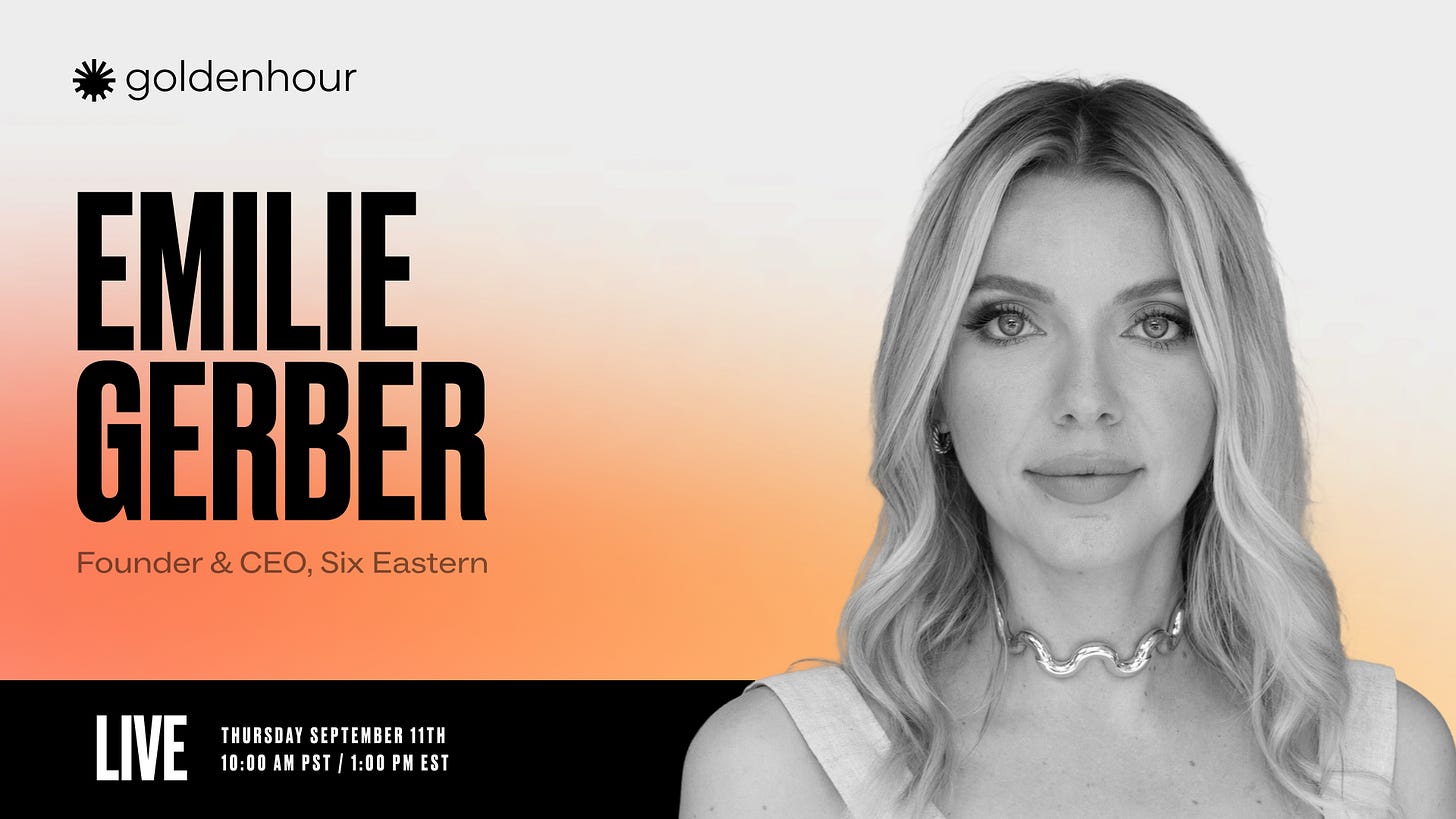Why Speed Is Quietly Killing Marketing
Friction may be the key to bringing the soul back into marketing.
We live in a business culture obsessed with speed.
Faster launches. Faster funnels. Faster content. But in our rush for efficiency, something essential is slipping away: the creativity, humanity, and soul of marketing.
That’s what I unpacked with Robert Rose, best-selling author of Valuable Friction and co-founder of the Content Marketing Institute. Our conversation made one thing clear: marketing can’t survive on optimization alone. To build brands that last, we need to slow down, add friction, and make room for the art again.
Here are the takeaways:
1) We’ve over-rotated to science and lost the art
Performance dashboards, A/B tests, and multivariate tweaks have created an environment where marketers spend more time pushing buttons than exercising creativity. Robert worries this shift is driving people out of the profession.
“Performance marketing has become the myopia of so many businesses… and what we’ve lost in the process is our real focus on creativity, telling great stories, creating competitive advantage.”
I’ve felt this firsthand. I’ve been in boardrooms where our work was reduced to building a “dollars in, dollars out” pipeline machine. That’s never been the full picture — marketing has always been half art, half science.
When we ignore the art, we lose the very thing that makes marketing strategic.
2) Real beats perfect — especially now
AI tends to smooth everything into safe, predictable outputs. But that’s not what audiences remember.
“There is so much value in putting something out that doesn’t work… tremendous value in making a decision that goes completely against the grain of everything the patterns suggest.”
Robert pointed out that AI, by design, looks for patterns — it reinforces what has already worked. But breakthroughs often come from doing the opposite: making a risky decision, publishing something messy, or trying an angle that feels uncomfortable.
He warned that when brands over-rely on technology to generate “safe” campaigns, they end up with content that is average at best — the least provocative, the least interesting, the safest bet. That kind of marketing might avoid mistakes, but it also avoids impact.
Perfect is sterile. Real is human. And real is what builds trust.
Watch my full discussion with Robert here:
3) Practice “valuable friction”
Friction isn’t a bug — it’s the spark that creates purpose. Robert calls this “valuable friction,” the conscious pause that helps us choose meaning over momentum.
“The most valuable thing you can hear on a basketball court is the squeak of the shoe… that conscious spark to move at the appropriate speed you need to get the creative human work done.”
Robert used Netflix’s “Skip Intro” button as an example. It may get viewers to the content faster, but it also erases part of the art — the storytelling, mood-setting, and memory-making of a show’s opening sequence. The same thing happens in marketing: we rush to ship campaigns that grab quick attention but sacrifice long-term meaning.
The pressure to “just get something out the door” is real. But when we pause, even briefly, it forces a different question: are we simply checking the box, or are we building something people will remember a year from now? That kind of friction is uncomfortable — but it’s also where real impact lives.
4) Use AI to deepen creative work — not replace it
The dominant narrative is that AI will replace human labor: fewer people doing the same work, faster. But Robert challenged that idea with a contrarian take:
“My blog posts used to take me three hours… now with AI they take me five, six, seven. Because I’m using it to pressure test my ideas, to look for clichés, to find the gaps.”
Instead of making his process shorter, AI makes it longer — because he’s using it to push deeper into the creative process. That’s the opportunity most leaders are missing.
The risk, as Robert warned, is that companies embrace the opposite model — letting AI generate the strategy while humans simply “stay in the loop” to correct its mistakes. That further strips the soul from marketing and reduces people to button-pushers.
5) Treat your content like a product
Robert argued that the very definition of “owned media” is shifting. For years, we thought of it as platforms we controlled — websites, blogs, newsletters. Today, he sees it differently:
“What we really thought of as owned media was our platforms… Now what we’re seeing is a resurgence of classic content marketing — owned media, period. In other words, shows, series, long-form projects… distributed across rented land.”
That nuance matters. It’s not just about where you host your content; it’s about whether the content itself is strong enough to travel. Shows, original research, and community-driven projects can live natively on LinkedIn or YouTube while still building brand equity.
The truth is, I still haven’t figured out the perfect way to move a rented audience into a truly owned relationship. And if I’m honest, I don’t think anyone has. But what I took from Robert is that the hard part isn’t the migration — it’s making something worth following in the first place.
Closing Thoughts
What struck me most in my conversation with Robert is how much his call for “valuable friction” extends beyond marketing. Yes, CMOs need to create space for creativity, resist the pressure of immediacy, and push their teams to favor meaning over momentum.
But the same is true for us as humans.
The cult of speed isn’t just a business problem — it’s a life problem. The constant rush to the next meeting, the next post, the next milestone leaves little room for reflection. Ancient practices like silence, solitude, and Sabbath were designed to do exactly what Robert is calling for in marketing: introduce intentional pauses that make the work of life more meaningful.
In a world that glorifies hustle and constant motion, slowing down is a quiet act of resistance. Choosing silence over noise, presence over distraction, and rest over relentless striving doesn’t just make us better leaders — it makes us more human.
Because in the end, friction isn’t about slowing down for the sake of it. It’s about creating space for what matters most.
Join me next week as I sit down with Emilie Gerber, Founder & CEO of Six Eastern, to explore the PR comeback in B2B marketing — and why third-party validation is becoming the new currency of relevance in the Intelligence Age.




